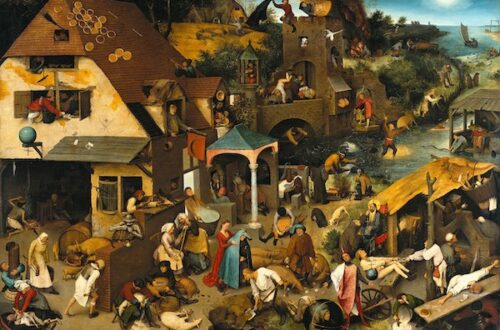Paul Cezanne’s vibrant vision and almost kinetic paintings mark an important shift in the trajectory of Modern Art. Like his predecessor Gustave Courbet, whose push against the traditional, highly stylized , standards of Western Art was a catalyst for artistic experimentation and expression. Cezanne’s vision for art’s direction, leading art into the Cubist era, likewise splintered the art world.
Cezanne’s process
Painting at the same time as the Impressionists, Cezanne for the most part kept to himself. Unlike his peers, he did not often inhabit artistic circles. Even through correspondences, preferring to live a secluded life in Provence. It was here that the painter put into practice again and again his new philosophy of art. Whilst Cezanne’s earlier works still frequently depict modern life, a trope of the Impressionists, throughout his life Cezanne shift his focus onto the technique of painting rather than content. Often repainting the same scene or subject many times over, focusing upon or altering one different aspect each time.
Even if Cezanne exhibited twice at the Salon de Refuses (the art show set up by the French Realists and Impressionists unable to exhibit at the Salon of the Academie des Beaux Arts in Paris), it wasn’t until 1895 that his fame became fully fledged. when the prolific Parisian art dealer, Ambroise Vollard, gave the artist his first solo exhibition.
A highlight among this exhibition was Still Life With a Curtain (1895) depicting a table laden with dishes of oranges nestled in folds of material.


As with many of his works, such as the The card Players and Mont Sainte-Victoire, Cezanne painted a series of these citrus-filled still lifes. Another famous iteration being Still-life with Apples and Oranges (1899). More so than his other series, his still-lifes seem to have captured the imagination and reverence of Cezanne’s audience like none other, and are, to this day, synonymous with Cezanne himself.
But why?
Well, in Cezanne’s still-lifes, motion is sensed (if not outrightly depicted), which reverberates within the viewer. In Still-life with Apples and Oranges (1899) Cezanne orientates the tableau diagonally with the tablecloth almost overflowing the frame. The fruit, positioned in pyramids to enhance the painting’s sense of precariousness, creates an almost physical response in the viewer. Who feels the need to reach out and catch the flailing fruit.

We thus bear witness to the essential features of Cezanne’s style: the mobile perspective, the manipulation of the pictorial plane. But also his interest in color (think bright oranges, muted greens and darkly outlined silhouettes), the flattening of perspective and the architectural organization of the canvas. All of which became the fundamentals of Cubism.
More so than in any of his portraits, Cezanne’s apples and oranges are full of life and drama even though there is no narrative, sentimentality, or interaction between figures. It is this vibrancy, transmitted through shape rather than subject, that inspired the Cubists artists. Like Jacques Braques and Picasso, whose fragmented, abstracted and geometric artworks took this idea to its extreme limits.
Discover our inspired by Cezanne collection !

Christiane Guerry


Dixie Salazar













